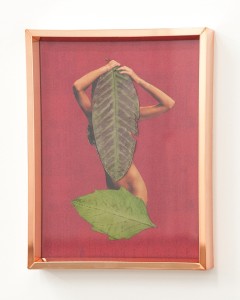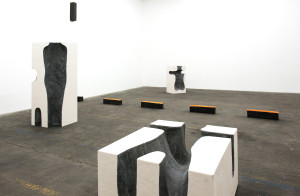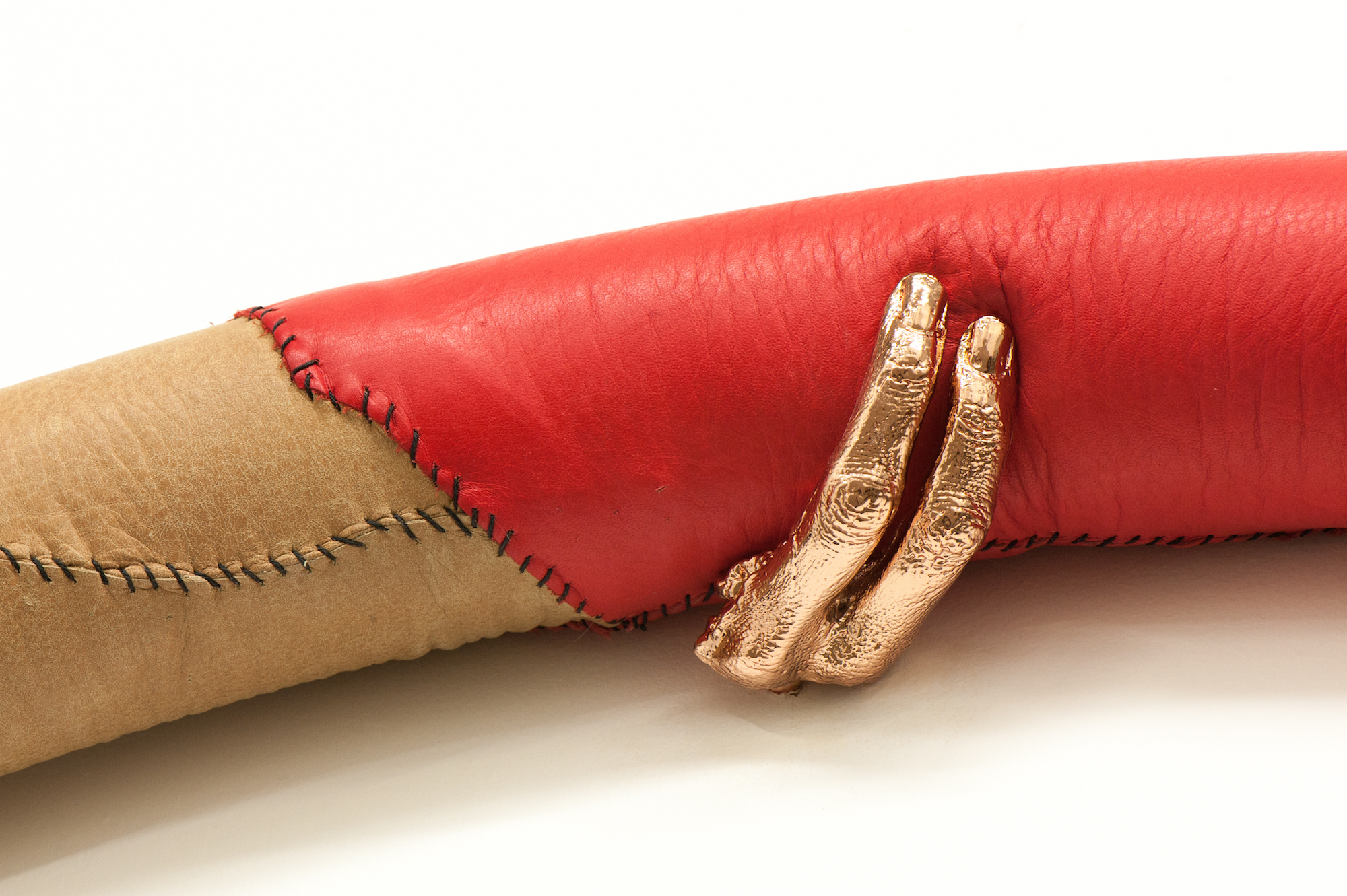The sculptural objects and installations of “Other Relevant Experience,” with their ceremonial shine and talismanic power, exhume dark histories of conquest and ruin while conjuring notions of magic, sacrifice and salvation. Karen Lofgren’s command of materials and their historical significance enables her to achieve these rich, diverse connotations, often with simple designs. For example, the felt loops of Leaning Figure (all works 2016) and Feedback Feedback Feedback appear petrified and damp, as if recently unearthed, but also look slightly industrial, like fatigued rubber.

Karen Lofgren, Feedback Feedback Feedback (2016), courtesy of the artist and Royale Projects: Contemporary Art. Photograph by Sabina McGrew.
Lofgren frequently revives ruin, or casts old objects as new. “Other Relevant Experience” includes a corroded steel spike that has been copper-plated, and copper casts of fingers, which look severed and cadaverous, but with their opulent metallic luster, imply social status and sacrifice. There is sometimes even a humorous, but still disconcerting, combination of themes of salvation and conquest. In the series, “Could You Name What is to Cure,” Lofgren’s copper-framed idols of tanned, bare-limbed and anonymous figures conflate the indigenous with the pornographic, and the medicinal with the perverted.

Karen Lofgren, Could You Name What Is To Cure #3 (2016), courtesy of the artist and Royale Projects: Contemporary Art. Photograph by Sabina McGrew.
The objects are never purely archaeological though. While Lofgren can draw from the history and power of artifact, they’re ambiguous as to time and place, often blurring notions of past and present, aboriginal and industrial. Symptom and Under Influence, for example, combine anachronistic methods: Lofgren has raggedly stitched together animal skins, but they’ve been garishly dyed, upholstered in the shape of a cylindrical arc and end-capped in copper. Lofgren’s sculptures are more than just history, but history unraveling and weaving into familiar experience, sometimes as a suture for the past, sometimes making post-apocalypse more present.

Karen Lofgren, Other Relevant Experience (installation view), courtesy of the artist and Royale Projects: Contemporary Art. Photograph by Sabina McGrew.
Amid evocations of ritual and ruin, Lofgren’s work makes the viewer acutely aware of the presence of his or her own body, but also eerily aware of absences. This is especially true with “Approaching the Limbless Gods,” a series of three large white blocks, each hollowed out in the shape of a human torso, like a mold. But the dark interiors of these molds have no details from any particular imprint; their sinuous curves have been smoothed over and rounded off from repeated use, as if many people had pressed their weight into them. Lofgren uses the repetitive implication of the molds to cleverly play into the idea of ritual, that is, the repeated acts that transmit and slowly distort belief and identity. The mold’s smoke-gray grooves summon the viewer’s body into the ash and repetition of ritual, but apparitions—the absences implied by the molds—are just as present.
Karen Lofgren, “Other Relevant Experience,” April 2, 2016 – May 14, 2016, at Royale Projects: Contemporary Art, 432 South Alameda Street, Los Angeles, California 90013, www.royaleprojects.com.


